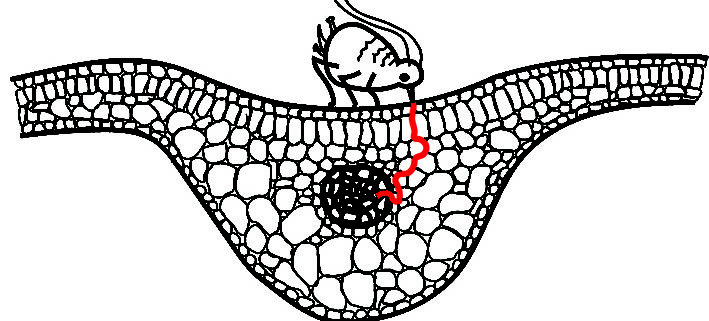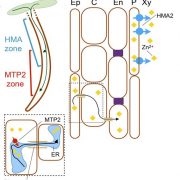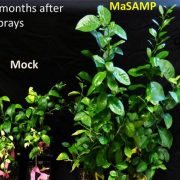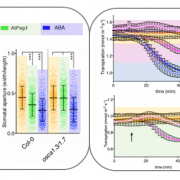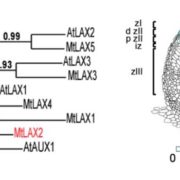A Plant Protein That Foils Aphid Feeding
Kloth et al. probe aphid feeding behavior. The Plant Cell 2017 doi: 10.1105/tpc.16.00424
By Karen Kloth
Background: Aphids are phloem-feeding insects. They penetrate plants with a piercing-sucking mouth. Once they reach a tube where the plant transports its sugar-rich phloem sap, they can take up sap for hours or even days. Unless the plant has a smart way to defend itself.
Question: To explore natural plant defense against aphids, we studied aphid feeding behavior on 350 varieties of the model plant Arabidopsis thaliana, originating from different locations in the northern hemisphere. To track aphid behavior on all these plants, we built a video-tracking platform. In this platform, aphids are released on leaf discs and recorded on video. Using special software, aphid feeding behavior was monitored on the 350 Arabidopsis varieties.
Findings: The aphids probed less on some plants than on others. This behavior was associated with natural mutations in one specific plant gene, coding for a heat shock-like protein with unknown function. To test if this protein really affects aphids, we screened aphid feeding behavior on mutant plants without the protein. On these plants, aphids ingested phloem sap longer and faster, and produced more offspring. The effects were particularly large at high temperature, 26 degrees Celsius, when plants produced more of the protein. These results confirmed that this protein increases plant resistance to aphids during heat stress. The protein also had another advantage. Plants with the protein were able to produce more seeds during heat stress than plants that lacked it.
Next, we studied where the protein is located. We transgenically expressed a fluorescent version of the protein in plants, and found that it is located in the tubes where phloem sap is transported. It coats the inside of the phloem tubes and forms spherical bodies around organelles known as mitochondria. In cell cultures, the location of the protein overlapped with another organelle, the endoplasmic reticulum. We think that the protein occludes the narrow food canal of the aphid and thereby obstructs phloem sap uptake. In addition, it might increase sap transport to the flower and seeds during heat stress, but that needs to be verified.
Next steps: Natural plant resistance to aphids and better tolerance to heat stress are of interest for plant breeding companies. Breeding crops with effective resistance proteins can help to reduce insecticide application and yield losses due to hot conditions. In the long term, this research could help farmers produce more sustainable fruits and vegetables.
Kloth, K.J., Busscher, J., Wiegers, G., Kruijer, W., Buijs, G., Meyer, R.C., Albrectsen, B.R., Bouwmeester, H.J., Dicke, M., and Jongsma, M.A. (2017). SIEVE ELEMENT-LINING CHAPERONE 1 restricts aphid feeding on Arabidopsis during heat stress. Plant Cell. https://doi.org/10.1105/tpc.16.00424
Videos of aphid probing behavior:


